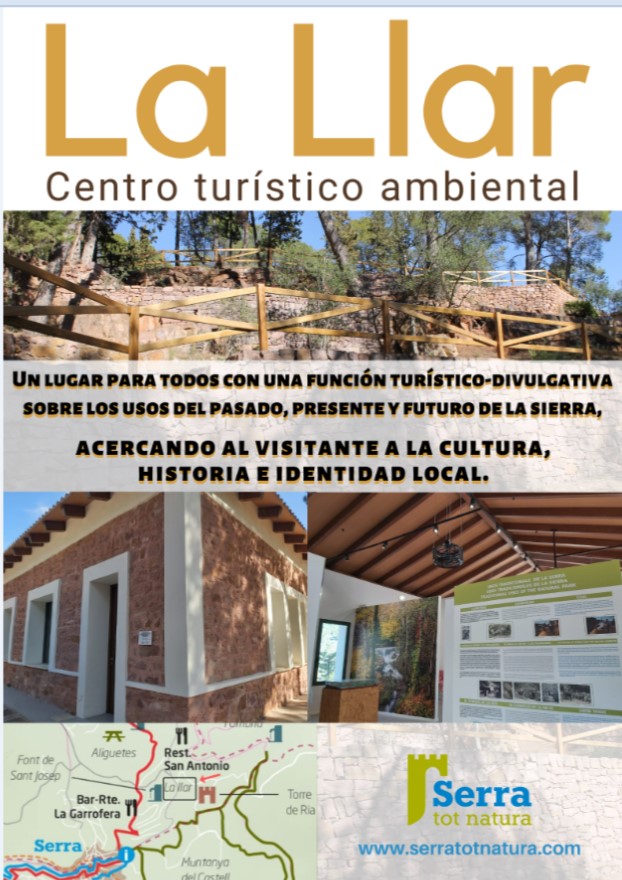La Llar
We think of La Llar, as a new tourist product at the service of the visitor and the conservation and sustainable development of natural heritage and tourism. A place for all with a tourist-informative function on the past, present and future uses of the mountains, bringing with this, the visitor to the local culture, history and identity.
It is intended to value the natural and ethnological heritage to be a factor of dynamization, contributing to the sustainable and responsible development of the tourist activity of the municipality, therefore, it is not only intended to preserve and revalue the heritage, but also to interpret it, transmit knowledge and educate visitors.
Dry stone
Dry stone walls have created structures for agriculture and livestock, which have shaped very numerous and varied landscapes, as is the case of the Sierra Calderona, where the maximum advantage of local natural resources has been made possible, in a sustainable and responsible way with the environment. As we can well see in La Llar we have a good sample of them.
In November 2018 UNESCO declared the technique and knowledge of the art of building walls in dry stone intangible Cultural Heritage of Humanity.
The art of dry stone walling concerns the knowhow related to making stone constructions by stacking stones upon each other, without using any other materials except sometimes dry soil. Dry stone structures are spread across most rural areas – mainly in steep terrains – both inside and outside inhabited spaces, though they are not unknown in urban areas. The stability of the structures is ensured through the careful selection and placement of the stones, and dry-stone structures have shaped numerous, diverse landscapes, forming various modes of dwelling, farming and husbandry. Such structures testify to the methods and practices used by people from prehistory to today to organize their living and working space by optimizing local natural and human resources.
They play a vital role in preventing landslides, floods and avalanches, and in combating erosion and desertification of the land, enhancing biodiversity and creating adequate microclimatic conditions for agriculture. The bearers and practitioners include the rural communities where the element is deeply rooted, as well as professionals in the construction business. Dry stone structures are always made in perfect harmony with the environment and the technique exemplifies a harmonious relationship between human beings and nature. The practice is passed down primarily through practical application adapted to the particular conditions of each place.
The International Committee valued that it is a living tradition, which provides all its professionals with a strong sense of identity and plays a fundamental role in the creation and maintenance of the living environment. The fact that it was a joint candidacy of Croatia, Cyprus, France, Greece, Italy, Slovenia, Spain and Switzerland implies international collaboration, interdisciplinary research and the exchange of good protection practices has also played in favor of the protection of the dry stone technique in the understanding of Unesco that the declaration of Intangible Cultural Heritage of Humanity will develop common policies to protect an ancestral technique and contribute to its promotion.
https://ich.unesco.org/es/

